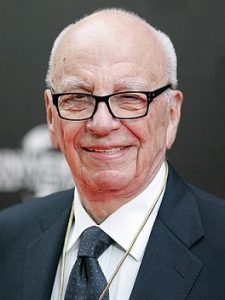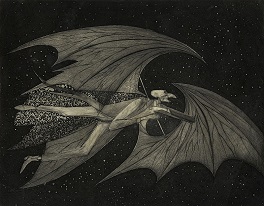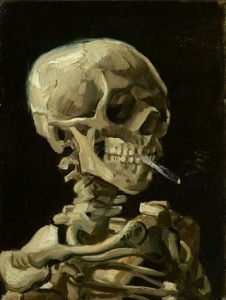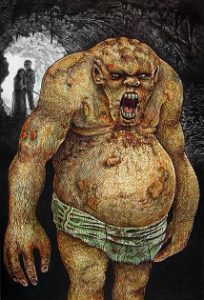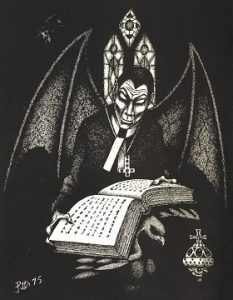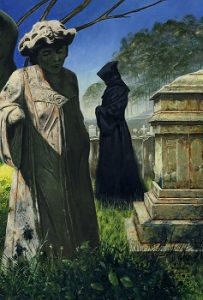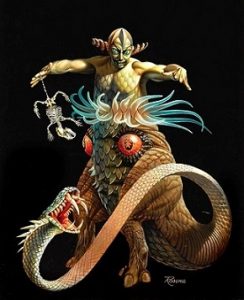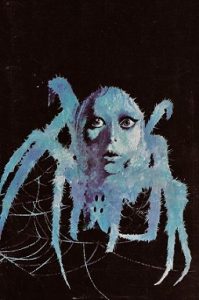
© Brandywine Productions / 20th Century Fox
I see a new Alien movie has just been released. Entitled Alien: Romulus and directed by Fede Alvarez, it’s had variable reviews – for instance, Peter Bradshaw gave it two stars in the Guardian, Kim Newman gave it three stars in Sci-fi Now and John Nugent gave it four stars in Empire. My tastes generally align with Newman’s, so I suspect if I go to see it, I’ll find Alien: Romulus a middling cinematic experience. I suspect too the critics reacting most positively to the film are secretly doing so out of relief that co-producer Ridley Scott didn’t insist on it having Michael Fassbender play a certain, cocky android spouting tediously about the meaning of life, the universe and everything.
Anyway, this gives me an excuse to reprint something I once wrote about James Cameron’s Aliens (1986), the second entry in the series. Film fans will probably spend the rest of time arguing about whether it or Ridley Scott’s 1979 original is the best Alien movie of all, but Aliens is probably my favourite. That may be because I first saw it in a more conducive environment – a packed cinema in Aberdeen shortly after its release, where the audience initially didn’t know what to expect but certainly showed their appreciation when the thrills started coming. (Whereas I first saw Scott’s Alien at a gathering of my high school’s film club, where the building tension was seriously interrupted by a ten-minute break when a teacher had to change the reels on the projector, and I watched the movie surrounded by loudmouth, smartass, wanker-teenager schoolmates.)
Here, then, is my paean to Aliens… With some bonus Father Ted.

© Hat Trick Productions / Channel 4
Scene: The living room of the Parochial House on Craggy Island during a 1996 episode of Father Ted. The elderly and infirm Bishop Jordan, one of a visiting trio of church dignitaries, has just been explaining how he had a heart attack last year and needs to avoid having sudden surprises and shocks.
Father Dougal (bellowing at the top of his voice): AAAAAHHHHH!
Bishop Jordan almost suffers a heart attack on the living room sofa.
Father Ted (seeing Bishop Jordan’s distress): Dougal! What are you doing?!
Father Dougal: Sorry, Ted – I just remembered Aliens is on after the news!
Father Ted: Dougal, for God’s sake! (To the stricken Bishop Jordan, who has almost collapsed off the sofa.) I’m sorry, Bishop Jordan! (To Dougal.) Did you not hear what he’s saying about his heart?
Father Dougal: I know, but it’s just that it’s the Director’s Cut! Come on everyone, let’s all have a lads’ night in!
Father Ted: Dougal, just shut up! (To Bishop Jordan.) Ha-ha. A heart attack? That’s rare enough these days.
Bishop O’Neill (trying to help Father Jordan back onto the sofa): There were certainly a lot of prayers said for Bishop Jordan –
Father Dougal: I don’t know why we can’t look at Aliens –
Father Ted: Dougal! Bishop O’Neill is speaking.
Father Dougal: But… They’d love it, Ted!
Father Ted: No, they wouldn’t!
Father Dougal: But bishops love sci-fi –
Father Ted: DOUGAL! WE ARE NOT WATCHING ALIENS!

© Brandywine Productions / 20th Century Fox
Like Dougal in that old episode of Father Ted, I still get irrationally excited when I discover that James Cameron’s Aliens is about to get another airing on TV. And during the first occasion I watched it, there were a few moments when, like the beleaguered Bishop Jordan, I thought my heart was about to pop. Yes, Aliens is a film that gets the adrenalin sluicing through you like almost no other.
It’s remarkable that the film achieves this when it’s a sequel. One of the Great Laws of the Cinema is that, compared to the original films, sequels are almost always rubbish. Certainly, that law seemed to hold true in the 1980s, when cinema audiences were subjected to such puddings as Halloween II (1981), Grease 2 (1982), Rocky III (1982) and IV (1985), Jaws 3-D (1983), Rambo: First Blood Part II (1985) and Rambo III (1988), Poltergeist II: The Other Side (1986) and Beverley Hills Cop II (1987). Oh, and Piranha Part Two: The Spawning (1981), which was directed by a certain James Cameron…
Aliens’ task was particularly daunting. It was to be the follow-up to Ridley Scott’s magnificent haunted-house-in-space movie, 1979’s Alien.
It’s unsurprising that while Cameron was shooting the sequel at Buckinghamshire’s Pinewood Studios in the mid-1980s, he had to put up with a sceptical British crew who were of the opinion that this bearded early-thirty-something Canadian wasn’t fit to lick the boots of the mighty Ridley. Mind you, the contempt was reciprocated by Cameron. A man used to pursuing his vision with the single-minded ruthlessness of The Terminator (1984) – the film that he’d directed between the Piranha sequel and the Alien sequel – Cameron was not impressed by the crew’s Great British working practices like stopping every couple of minutes to have a tea-break.
The resulting movie shows no disrespect to Ridley Scott or the original Alien. It simply takes a very different approach to the hideous, slimy, fanged, multi-jawed, acid-blooded title creatures. Whereas Alien sets one of them loose in a giant spaceship and Scott milked the scenario for all the clammy, claustrophobic horror it was worth, Cameron unleashes a whole army of them in and around a base on a distant planet and declares out-and-out war on the bastards, courtesy of a well-armed platoon of space marines who’ve journeyed there in the company of Sigourney Weaver’s Ripley, heroine and sole survivor of the first film. Yes, there’s clamminess, claustrophobia and horror to be found in Cameron’s vision too, but that doesn’t prevent Aliens from also being one of the best action films ever made.
That’s not to say that Aliens is a non-stop rollercoaster from start to finish. Cameron actually takes his time getting his characters to the base (after contact with the 160-strong space colony there is suddenly and mysteriously lost). Wisely, and unlike a lot of directors of scary movies who’ve come since, he gives the audience a chance to get to know, and get to like, his characters. So that when hell does break loose, halfway through the film, we’re genuinely on the edge of our seats because we’re rooting for those characters to survive.
Cameron does such a good job of it that, 38 years on, I still know those characters like they’re dear old friends. There’s Michael Biehn’s reliable Corporal Hicks, who packs an old pump-action shotgun alongside his space-age weaponry (“I like to keep this handy… for close encounters”) and who finds himself in the unexpected position of platoon leader after the aliens’ first onslaught wipes half of it out. There’s Lance Henriksen’s Bishop, the regulation android whom Ripley – mindful of what happened in the first movie – is extremely wary of; though after he’s saved her and saved the other surviving humans three or four times (even after he gets ripped in half) she comes to the realisation that he’s a good, if synthetic, bloke.

© Brandywine Productions / 20th Century Fox

© Brandywine Productions / 20th Century Fox
And there’s the motor-mouthed Private Hudson, played by the late, great Bill Paxton, who gets the film’s best lines. This is both before the aliens show up, when he’s a swaggering, show-offy git – “Hey Ripley, don’t worry. Me and my squad of ultimate badasses will protect you… We got nukes, we got knives, we got sharp sticks!” – and after they show up, when he’s a quivering, whiny git – “Hey, maybe you haven’t been keeping up on current events but we just got our asses kicked!”
But Aliens is no simple testosterone-fest. Dougal in Father Ted might have earmarked it for a ‘lads’ night in’ but it’s also, subversively, a chick-flick. At its heart are no fewer than four powerful female characters. There’s the splendid Sigourney Weaver, of course, back in the role of Ripley – though it’s in Aliens that both Weaver and Ripley properly achieve the status of cinematic icons. There’s Carrie Henn as Newt, the waif-like little girl who’s the colony’s only survivor and who, gradually, awakens Ripley’s maternal instincts. While Ripley spends the original movie reacting to and mainly running from the horrors around her, it’s thanks to Newt that in Aliens she becomes increasingly proactive and ends up running at them. Admittedly, that’s when she’s armed with a M41A Pulse Rifle / M240 Flamethrower.
And let’s not forget the impressive Private Vasquez, played by Jenette Goldstein, who’s more than a match than any man in her platoon. “All right,” she snarls at one point, “we got seven canisters of CM-20. I say we roll them in there and nerve-gas the whole f***in’ nest.” And when she’s not shooting down aliens, she’s shooting down Hudson’s bullshit, as happens in the following famous exchange: “Hey Vasquez. Have you ever been mistaken for a man?” “No. Have you?”
The film’s final trump card also takes female form: the Alien Queen. Here, Cameron combines the design of the original alien, by the Swiss artist H.R. Giger, with the concepts of an egg-laying queen termite and a tyrannosaurus rex. He creates a twenty-foot foe of terrifying savagery, strength and tenacity. And when she comes bearing down on Ripley at the movie’s climax, it’s clear to the audience that this is the showdown between the Big Bad Mommas. By this time, the Queen has seen her whole hellish brood wiped out. Meanwhile, Ripley is determined to defend what’s left of her family – Newt and the now-incapacitated Hicks and Bishop – to the death.
What more can I say? Aliens remains exhilarating nearly four decades on. Slowly and inexorably, the first half of the film winches you in. Thereafter, you find yourself strapped into a thrill-ride there’s no escape from. In the words of Private Hudson: “We’re on an express elevator to hell, going down!”

© Brandywine Productions / 20th Century Fox








